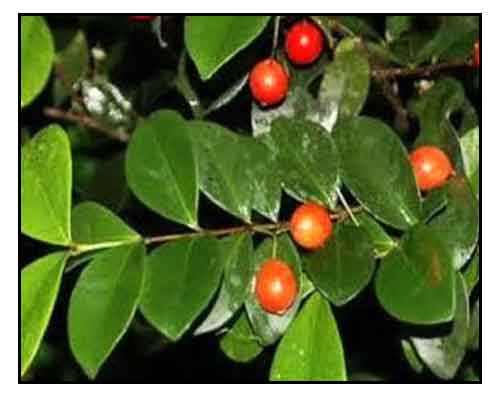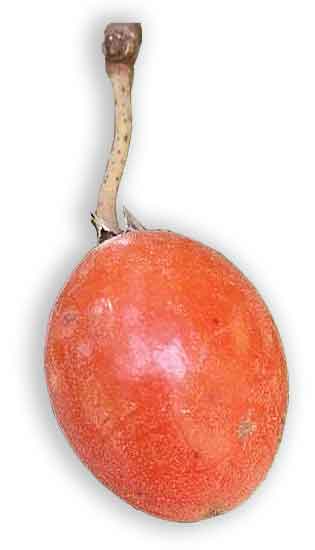
Family • Sapotaceae
Caqui
Manilkara kauki (L.) Dubard
KAUKI / WONGI PLUM
| Scientific names | Common names |
| Achras mammosa Sieber ex A.DC. | Sawai (Tag.) |
| Imbricaria malabarica Poir. | Adam's fruit (Engl.) |
| Kaukenia kauki (L.) Kuntze | Caqui (Engl.) |
| Manilkara kauki (L.) Dubard | Kauki (Engl.) |
| Mimusops bojeri A.DC. | Wongai plum (Engl.) |
| Mimusops browniana (A.DC.) Benth. | Wongi (Engl.) |
| Mimusops elengi Bojer | Wongi plum (Engl.) |
| Mimusops hookeri A.DC. | |
| Mimusops kauki L. | |
| Mimusops kauki Bojer | |
| Mimusops kauki var. browniana A.DC. | |
| Mimusops manilkara G.Don | |
| Manilkara kauki (L.) Dubard is an accepted name. The Plant List | |
| Other vernacular names |
| AUSTRALIA: Wongi. |
| AYURVEDIC: Khirni. |
| INDIA: Adão. |
| INDONESIAN: Sawo Kacik, Kayu sawo, Sabo. |
| JAVA: Sawo kacik, Sawo kecik. |
| MALAYSIA: Sawah, Sawai, Sawau. |
| PAPUA NEW GUINEA: Sner. |
| SIDDHA: Palai. |
| THAI: Lamut sida, Lamut thai. |
| VIETNAMESE: Vi[ees]t. |
Updated May 2024
August 2020
![]()
 |
| PHOTOS / ILLUSTRATIONS |
| IMAGE SOURCE: Photograph / Wongai Plum (Manilkara kauki): Leaves and fruits / click on image to go to source page / © Andra Farms |
| OTHER IMAGE SOURCE: Illustration / Manilkara kauki / Rumphus (Rumpf) G E : Herbarium amboinense (1741-1750) Vol 3: 1743 /PlantIllustrations.org |
| OTHER IMAGE SOURCE: Manilkara kauki - Mini Sapodilla fruit / Image modified / Click on image or link to go to source page / ebay |
Additional
Sources and Suggested Readings |
• |
DOI: It is not uncommon for links on studies/sources to change. Copying and pasting the information on the search window or using the DOI (if available) will often redirect to the new link page. (Citing and Using a (DOI) Digital Object Identifier) |
| List of Understudied Philippine Medicinal Plants |
| New plant names needed The compilation now numbers over 1,300 medicinal plants. While I believe there are hundreds more that can be added to the collection, they are becoming more difficult to find. If you have a plant to suggest for inclusion, native or introduced, please email the info: scientific name (most helpful), local plant name (if known), any known folkloric medicinal use, and, if possible, a photo. Your help will be greatly appreciated. |
• |
 |

 Gen info
Gen info
 Parts used
Parts used